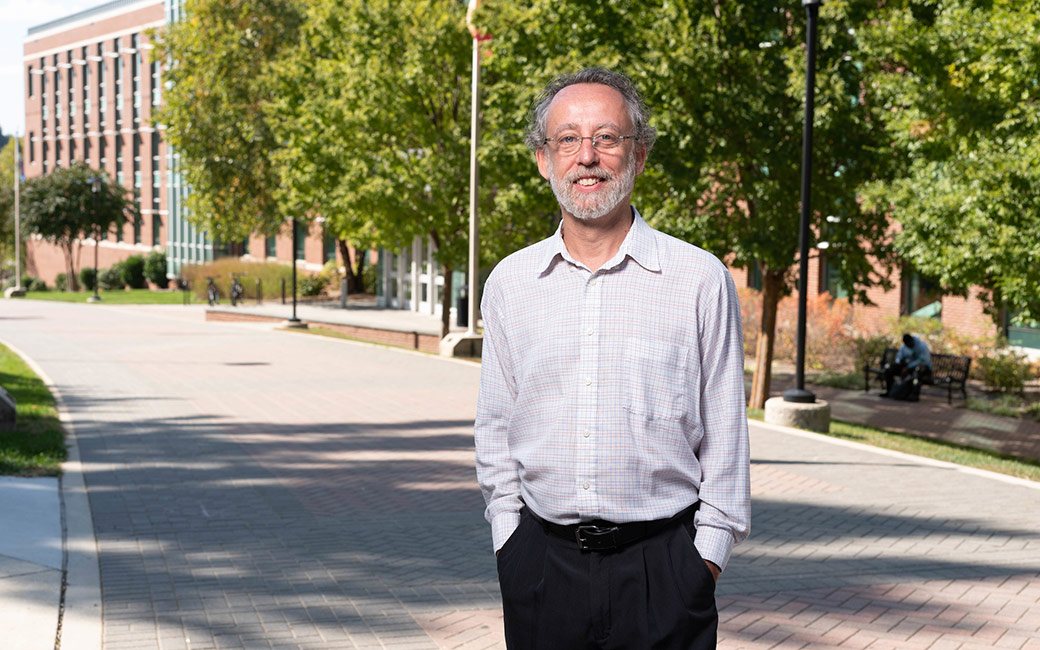Learning from Native American understandings of iyeška
History professor Akim Reinhardt to share study of Lakota people in sabbatical lecture Nov. 1
By Rebecca Kirkman on October 27, 2022

While on sabbatical last spring, Akim Reinhardt—a professor at TU specializing in Indigenous North America, settler colonialism and the North American West—traveled to the Pine Ridge Reservation in South Dakota to explore the Oglala Lakota College library archives.
His resulting work, which he recently presented at the Western History Association’s annual conference in San Antonio and will be the focus of a future book, centers on the important role of mixed people or iyeška, which means translator, in Lakota culture throughout history.
We spoke with Reinhardt about his research ahead of his lecture.
Can you explain the meaning of iyeška and your research surrounding the concept?
Lakotas, unlike American society, have historically had a category for mixed people. And their word for it is iyeška. It was a category of people who had nothing to do directly with your lineage. Let's say you have a Lakota parent and a Cheyenne parent. If you're raised among Lakotas as Lakota, that's your language and you don't really know Cheyenne, then you're Lakota. But if you grew up in both worlds, you're bilingual and you understand all these things, then you're iyeška, and you have an important role as a mediator and translator maintaining relations with say, the Cheyenne or the Arapaho or the Arikara. Maintaining relationships between nations is important, and iyeška filled that role.
My larger project is to understand what iyeška means and then how it changes over time and what role colonialism plays in those changes.
Changing Indigenous Understandings of Mixed People
Nov. 1, 5:30 – 6:30 p.m. | LA 3310
Join history professor Akim Reinhardt for a sabbatical lecture “Lakota, Iyeška, T’oka (Allies, Translators, Enemies): Changing Indigenous Understandings of Mixed People” followed by a reception in LA Cafe.
This event is presented by the CLA Commemorative Events Committee in commemoration of Native American Heritage Month.
How does this research contribute to the public good?
The most important reason is that part of what settler colonialism does is it produces erasure. A scholar called Patrick Wolfe uses the term logic of elimination, which covers a lot, including ethnic cleansing and genocide. But more subtly, Native people are generally not part of the national discourse. And when they are, it's usually about the past. So any time that we can counter those erasures by making people remember that Native people are still here is important.
More specifically to the project, it's something that non-Native Americans can connect to because this issue of what it means to be mixed is something that America has been grappling with over the last 20, 30 years [especially]. The year 2000 was the very first census in which people were allowed to check more than one box for race. It's going to be a decades- or centuries-long process for Americans to figure out what it means. But [the concept of iyeška] can be part of that discussion, by looking at a society that has been getting their heads around it for hundreds, if not thousands, of years and has also had to deal with their own changes when confronted by a settler colonial culture that refuses to acknowledge it. It can help Americans understand these issues not only apply to Native people but in a general sense apply to themselves.
What courses do you teach about Native American history at TU?
I have a two-part, upper division history course, HIST 379 and 380, which focus on Native history before and after the late 1800s. The first half starts 15,000 years ago, and we move up to the 1870s and 1880s. And then the second course is the last 150 years or so. In the Honors College, I teach a seminar—HONR 370—on the history of Native women. I offer the first two courses every year, and the honors course biannually. I'll be offering that in the spring along with HIST 380.
I'm teaching a brand-new course in the global humanities graduate program this term, HUMA 618: Colonialism, Postcolonialism and Decolonization, which I co-designed with Jennifer Ballengee, who runs that program. Different faculty teach that differently, but I’m doing it with a focus on Native Americans.
How did you get interested in Native American history?
There were a few books that were important to me in developing my interest in Native history. One was Vine Deloria Jr.’s 1969 book “Custer Died for Your Sins,” which I highly recommend—I still use it in class today. Deloria is considered arguably the premier Native intellectual of the 20th century, certainly of the postwar 20th century. He's from South Dakota, the Standing Rock Reservation. He was politically sharp, sarcastic and funny and biting. And the book is all about the 20th century. Before that I'd been reading only about the 18th and 19th centuries, because that's where most of the literature was at the time. When I read this book in 1991 or so, it was all new to me.
For more events from the College of Liberal Arts, visit the CLA events calendar.